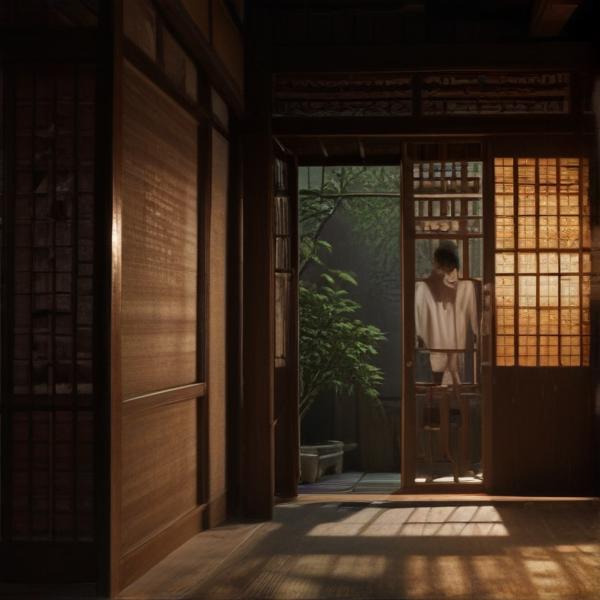基本信息 (Basic Information)
含义与用法 (Meanings & Usage)
中文核心释义 (Core Chinese Meaning): 把一物嵌入另一物中,多用于装饰,如把玉石、金银等嵌入器物边缘。
英文核心释义 (Core English Meaning): to inlay, to set, to mount (especially decorative materials like jade, gold, etc. into an object); to border or edge with (another material)
象形意义 / 为何这么写 (Pictographic Meaning / Writing Rationale)
文言文释义 (Classical Chinese Meaning)
“镶”出现较晚,文言文中常与现代意义相近,即嵌入、饰边之意。'镶' appeared relatively late and its meaning in Classical Chinese is similar to the modern sense, referring to inlaying or bordering.
深入学习 (In-depth Study)
字源故事 (Origin Story)
字形演变 (Character Evolution)
常用词语和例句 (Common Words & Examples)
镶嵌 (to inlay, to embed)
这枚戒指上镶嵌着一颗美丽的宝石。
Eng: A beautiful gem is inlaid on this ring.
镶金 (inlaid with gold; gold-edged)
她穿了一件镶金的传统服饰。
Eng: She wore a traditional outfit inlaid with gold.
镶边 (bordered; edged)
这条桌布是蓝色镶边的。
Eng: This tablecloth is edged with blue.
相关成语 (Related Idioms)
相关成语信息待补充。Related idiom information pending.
多语言翻译 (核心释义) (Translations (Core Meaning))
- French: incruster, sertir, border
- German: einlegen, einfassen, einfassen mit
- Spanish: incrustar, engastar, ribetear
- Italian: incastonare, bordare
- Portuguese: incrustar, cravejar, guarnecer
- Russian: инкрустировать, окаймлять
- Arabic: تطعيم، ترصيع، تزيين بالحواف
- Persian: نشانیدن، مرصع کردن
- Dutch: inleggen, omranden, afzetten met
- Polish: inkrustować, oprawiać
- Vietnamese: khảm, nạm, viền
- Ukrainian: інкрустувати, облямувати
视频学习资源 (Video Learning Resources)
通过以下链接在热门视频网站搜索 "镶" 的更多讲解:
Search for more explanations of "镶" on popular video sites:
- 在 Bilibili.com 搜索 "镶 字源 说文解字" (Search on Bilibili)
- 在 YouTube.com 搜索 "镶 character origin etymology" (Search on YouTube)
网络参考 (Web References for "镶") ()
网络内容摘要 (Web Content Summary):
-
核心含义:“镶”(繁体:鑲,拼音:xiāng)主要表示将一种材料嵌入或包在另一种材料的边缘或表面上。例如“镶嵌”(to inlay)、“镶边”(to edge with)。 Core meaning: "镶" (traditional: 鑲, pinyin: xiāng) mainly means to inlay or to edge, that is, to set or embed one material into or around another. For example, “镶嵌” (to inlay), “镶边” (to add an edge).
-
字源与构造:“镶”属于形声字,左边“金”表意,表示与金属相关,右边“襄”为声旁也兼具部分表意功能。最早含义与铸造时模型里的“瓤子”(即铸型中间的内芯)有关,类似瓜的“瓤”。 Etymology & Structure: "镶" is a phono-semantic compound: "金" (metal radical) indicates its relation to metals; "襄" contributes both sound and meaning. Its earliest meaning referred to the “core” inside a casting mould (like the pulp inside a melon).
-
特殊用法或文化背景:早期“镶”也作兵器名(见晋·张华《博陵王宫侠曲》),但现代基本不用,主要作“镶嵌”、“镶边”等动词。 Special Uses or Cultural Notes: Historically, "镶" also referred to an ancient kind of weapon, though this meaning is now obsolete. Today, it mainly appears in verbs like “镶嵌” (to inlay), “镶边” (to edge/set).
-
易混淆点:与“嵌”、“嵌入”(to embed),以及“边”(edge)等词语形义相关,但“镶”常指用金属或装饰物体镶在边缘。 Common Confusions: "镶" is often confused with similar words like “嵌” (to embed) and “边” (edge), but "镶" specifically refers to decorative edging or inlays, often with metal.
-
常用词语:如“镶金”(gold-inlaid)、“镶银”(silver-edged)、“镶牙”(dental inlay)、“镶嵌艺术”(inlay art)。 Common Phrases: e.g., “镶金” (gold-inlaid), “镶银” (silver-edged), “镶牙” (dental inlay), “镶嵌艺术” (inlay art).
镶字形演变字源_汉字「镶」_镶的甲骨文_镶的金文_金文编_甲骨文编
《說文》:「鑲,作型中腸也。」段注:「型者,鑄器之法也。其中腸謂之鑲,猶瓜中腸謂之瓤也。鑲意用為句鑲兵器也。」考襄字有因意,故鑲字聲符應有兼具表意的功能。楷書字形承篆文而來。在六書中屬於形聲。 汉字:「镶」 字形演变 字源演变
镶的解释|镶的意思|汉典"镶"字的基本解释 - 漢典
镶. 鑲 xiāng 〈名〉 (1) (形声。 从金,襄声。本义:瓤子) (2) 铸铜铁器模型的瓤子 [cast mould] 镶,作型中肠也。—— 《说文》 (3) 古兵器名 [an ancient weapon] 手持白头镶。—— 晋 · 张华 《博陵王宫侠曲二首》 词性变化. 镶. 鑲 xiāng 〈动〉 (1) 镶嵌物相嵌或相配合 [inlay] 单拿了一双老年四楞象牙镶金的 ...
更多图片 (镶 More Images) ()
